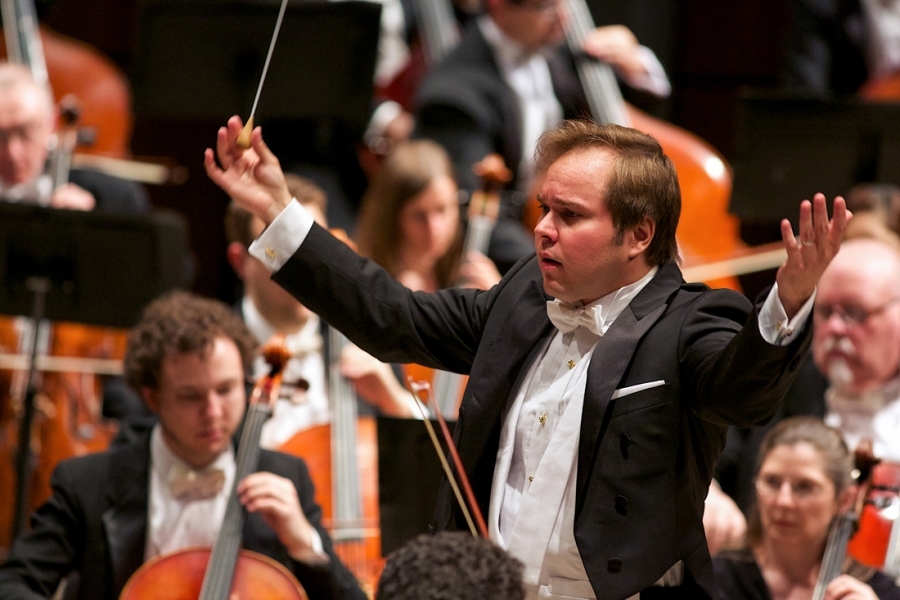GRAND RAPIDS — “Pictures at an Exhibition” is a musical tour through a collection of paintings, drawings and sketches, including scenes from a bustling marketplace, a witch from Slavic folklore, the catacombs of Paris, and more.
When Modest Mussorgsky composed the piece in 1874, he intended to memorialize his friend and fellow artist by translating his images into sound.
The Grand Rapids Symphony presented a visually stimulating performance of the work Friday night, bringing the “Pictures” to life as though paint was still drying on a canvas. Music Director Marcelo Lehninger led the concert in his final appearance with the orchestra this season.
Of the several orchestrations of Mussorgsky’s most famous piano composition, Maurice Ravel’s is the most popular.
While some interpretations attempt to coarsen the orchestration’s lavish sound, unique timbres and diverse detail that allow a more stark, “Russian” character, the Grand Rapids Symphony fully embraced its darker colors and edginess. Weaving in and out of a leisurely “Promenade” theme (meant to evoke Mussorgsky wandering through the gallery), the orchestra took the audience from one picture to the next.
Lehninger’s conducting was particularly exhilarating during "The Hut on Hen's Legs (Baba Yaga)” as he and the musicians conjured the grotesque sounds of a witch’s flight. The performance escalated into a thrilling conclusion, and the audience responded aptly with a standing ovation.
The chilling beauty of “Pictures at an Exhibition" nearly overshadowed a first half that was no less eventful. If the guiding theme for this program was visual stimulation, the orchestra met it with panache.
The program began with an element of surprise when Marcelo appeared on stage without most of the orchestra. The subsequent performance of John Corigliano’s “Promenade Overture” elicited many chuckles from the audience as the musicians gradually filled the stage.
To be fair, it’s not an everyday occurrence to see a group of cellists march onstage while plucking their instruments. Once the procession had ceased and the musicians were comfortably in their seats, the orchestra’s initial imprecision and hesitance with the piece swelled into a stirring climax.
Music critic Alex Ross put it best when he said, “Whenever the American dream suffers a catastrophic setback, Barber’s Adagio [for Strings] plays on the radio.” The haunting melody of this piece is usually associated with the deaths of such luminaries as Albert Einstein and John F. Kennedy or with the films “Platoon” and “The Elephant Man.” Despite some intonation issues and unsteady pacing at the beginning, the culmination of the melodic line was quite powerful.
To end the first half, soloist Stefan Jackiw gave a passionate and fearless performance of Korngold’s “Violin Concerto in D Major.” Jackiw is best known for his appearance with the YouTube Symphony Orchestra in 2011. His silvery tone soared as the Symphony supplemented with plush melodies and gauzy harmonies. Korngold is best known for his pioneering Hollywood film scores, and this dramatic flair fully manifested during the flamboyant final movement.
The audience enthusiastically received Jackiw (including applause after the first movement) and he obliged with an encore featuring Bach’s Violin Sonata No.3, Largo.
The Grand Rapids Symphony will present another performance of “Pictures at an Exhibition” tonight at DeVos Performance Hall at 8 p.m. To hear a rebroadcast, listen to Blue Lake Public Radio on May 7, 2017, starting at 1 p.m.





